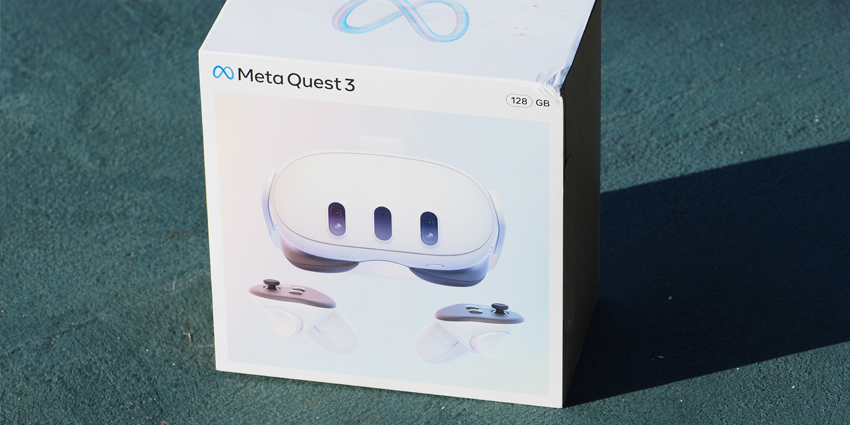Demand for immersive interactions is rising following the increase of interest in XR following 2022’s boom, and integrated technology to support this space is also in demand.
Everything from the increase of remote and hybrid work to growing interest in Metaverse services has prompted the rapid adoption of immersive content. However, the more companies explore the XR environment, the more they discover new demands for tools that help embed users in XR experiences.
A genuinely engaging virtual, augmented, or mixed reality (VR/AR/MR) service relies on more than just phenomenal visuals. Sound is also significant in understanding a space or interacting with content. This is why “spatial audio” is now gaining so much attention.
Here are some primary reasons businesses interested in XR should consider investing in spatial audio.
1. Mimic Genuine Real-World Experiences
In an age of hybrid work and remote interactions, companies and developers are increasingly working on making digital experiences feel more like real-world conversations. While video and audio conferencing tools – and similar solutions – can replicate real-world interactions, the services lack a significant level of immersion and presence.
Spatial audio replicates how sound is processed by the ear to make interactions feel more authentic. After all, the sounds people hear every day are complex. Humans listen to audio in three dimensions, noticing the position and direction of the sounds. In a physical meeting room, for instance, we can sense where a person’s voice comes from when they speak to us.
With spatial audio, it’s possible to make users feel like they’re sitting in real space through immersive technology. In a virtual meeting room, for instance, it would be possible to determine who is speaking based on their voice and where the audio is coming from, helping to direct user attention. This can allow for more meaningful interactions.
Hardware solutions like the Meta Quest Pro leverage spatial audio to enhance its Horizon remote working metaverse application.
2. Reduced Cognitive Load
Aside from making interactions and XR experiences more immersive, spatial audio could improve intelligibility and reduce the cognitive load required when following a conversation. Without spatial information, listeners need to focus on other audio characteristics to determine who is speaking in a conversation.
While these cues are often quite effective, helping us follow along relatively quickly in a conference call or virtual event, they require extra cognitive processing. Spatial cues, alternatively, can be distinguished regardless of a person’s attention span.
With spatial audio, interactions feel more natural and human and are easier to follow. This could be particularly important in an age where digital interactions are becoming more essential due to virtual events and hybrid work.
3. Enhanced Training Experiences
Research and development into spatial audio opportunities pave the way for unique interactions. Today’s companies can use immersive technology, from meetings and webinars to virtual events. However, the right technology could also be a powerful solution for training and educational requirements.
In many training scenarios, it’s essential to help users learn how to respond to situations in an authentic environment. For instance, in a military environment where companies might use XR to train team members to respond to threats, knowing how to listen for signs of trouble and detect where these audio cues are coming from is crucial.
Spatial audio also helps understand their surroundings in an immersive training scenario. The tech reminds trainees to pay attention to what’s happening around them rather than just focusing on what’s straight ahead, like VR or AR visuals. In training initiatives, spatial audio can ensure employees develop instinctual skills.
4. Enhanced Wellbeing
The concept of “well-being” is becoming increasingly crucial for business leaders and customer service experts. Both employees and consumers now expect brands to show a significant level of empathy and a commitment to excellent experiences. Spatial audio in the XR landscape can help with this.
There’s a chance the cognitive benefits of spatial audio could assist those suffering from hearing loss and make it easier for various consumers and employees to interact.
For companies investing in XR for collaboration and similar workplace purposes, spatial audio can help fill the missing gaps in a 2D audio representation. The right technology can help to reduce feelings of isolation in the remote world of work and minimize cognitive stress. This could allow businesses to attract more specialists to their teams.
5. Improved User and Customer Experiences
Perhaps most importantly, spatial audio can significantly improve the experience of consumers implementing XR solutions.
Spatial audio makes the digital world more “real” and authentic, boosting digital interactions. For instance, in an environment where a manufacturing company might want to guide a specialist around a digital twin of a workplace, spatial audio can help make the individual feel like they’re in the environment or help to isolate sensitive conversations.
Increasingly, as audio technology evolves, we’re also becoming more adept as human beings at recognizing the presence of spatial audio cues. Customers can tell the difference between the psychological experience of a VR environment enhanced with spatial audio and a lower-level VR interaction. This could make spatial audio a powerful differentiator for brands.
As the metaverse continues to pave the way for virtual interactions, spatial audio could quickly become a crucial tool for enabling enhanced experiences at every stage of the customer and employee journey.
What Next for Spatial Audio?
Spatial audio is a crucial component of the success of XR. Like other integrated immersive components like displays, haptics, and tracking, spatial audio increases immersion in ways most users will not consider.
Spatial audio is also finding a home outside of XR devices, such as with Apple iOS products; the technology will gain massively from alternative markets and brands putting R&D into the technology sector – much like how RT3D engines operate alongside gaming marketplace trends, gaining from the spaces innovations and investments.
2023 is a hectic year for XR headsets, with hardware vendors like Meta, Pico, HTC VIVE, and start-up solution providers scrambling to dethrone each other as leaders in XR hardware.
As XR headset firms work to outclass each other, more niche technical innovations, such as spatial audio, may become selling points for competing hardware.







